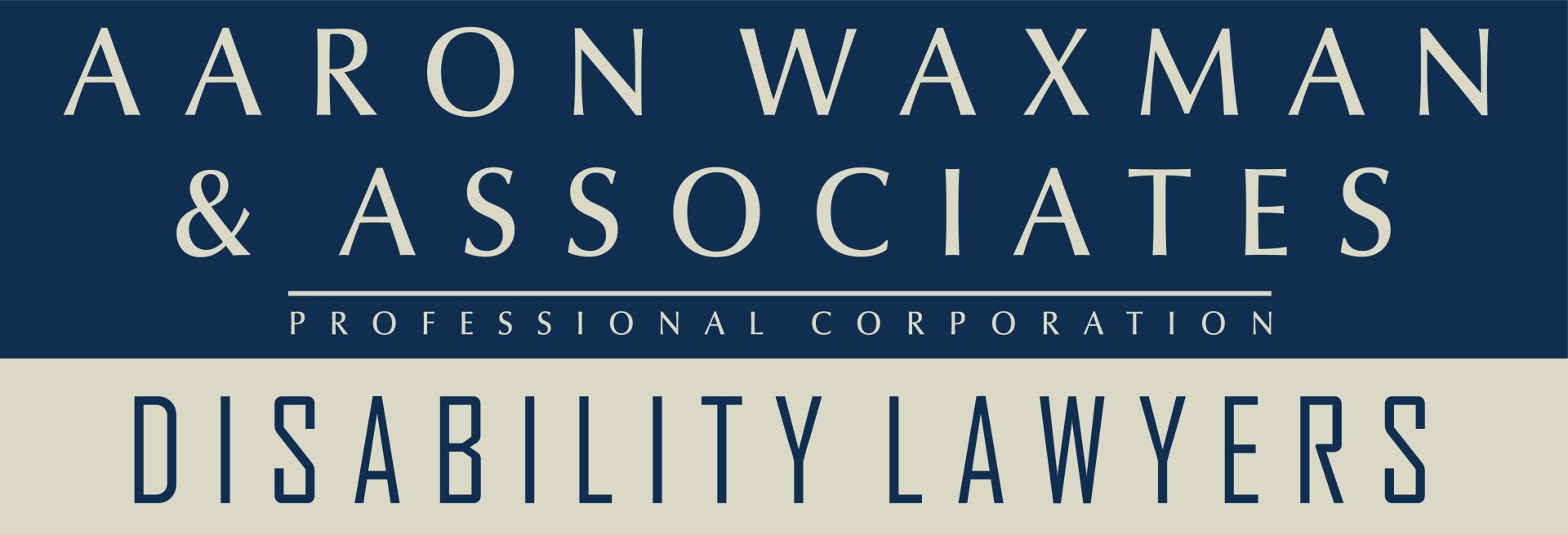Connective Tissue Diseases and Disability Claims – What You Need to Know
In previous blog posts we’ve talked about how chronic pain conditions can affect your ability to function to the extent that you are may need to stop working for a long period of time. There could be many reasons as to why you developed chronic pain (post- surgery, post-cancer treatments, illness, accident).
This blog post will discuss connective tissue diseases, what you need to know if you pursue a disability claim and what to do if your claim has been denied.
What are connective tissue diseases?
Connective tissues are made up of two proteins, collagen (a protein found in tendons, ligaments, skin, cornea, cartilage, bone and blood vessels) and elastin (a stretchy protein that is the major component of ligaments and skin). Connective tissue disease causes inflammation to collagen and elastin, harming the proteins and the body parts they connect.
There are many types of connective tissue diseases including rheumatoid arthritis, scleroderma and systemic lupus erythematosus (lupus).
What are the symptoms? How is it diagnosed?
Rheumatoid arthritis
Rheumatoid arthritis (RA) is a chronic type of arthritis, classified as an autoimmune disease, that affects the joints both sides of the body and might affect organs such as the skin, eyes, lungs, kidneys, heart, blood, or even nerves. Symptoms include joint pain and swelling, stiffness and fatigue and RA can develop gradually or may progress rapidly, and some people may experience RA for a period of time and then experience a remission.
Rheumatoid arthritis is diagnosed by monitoring symptoms like morning stiffness, swelling of 3 or more joints, swelling of the wrist/hand/finger joints, swelling of the same joints on both side of the body, changes in x-rays, nodules of the skin, positive blood test results for rheumatoid factor or specific antibodies.
Scleroderma
Scleroderma is a rare autoimmune disease where the body produces too much collagen which causes thickening and hardening of the skin. There are 2 forms of scleroderma, localized, which affects only the skin and diffuse, which affects other parts of the body including the muscles and joints, blood vessels, heart, lungs, kidneys and gastrointestinal tract and can be life threatening. Symptoms of scleroderma include thickening of the skin, swelling of the hands and feet, red spots on the skin, rigid joints, tight facial skin, ulcerations on the tips of the fingers and toes, stiff and painful joints, heartburn, difficulty swallowing and digestive issues, fatigue, weight loss and hair loss.
Scleroderma can be mistaken for rheumatoid arthritis or lupus. It is diagnosed by physical examination, where the doctor looks for the above symptoms and blood tests, pulmonary function tests, an electrocardiogram, kidney testing, gastrointestinal testing may be ordered. Elevated levels of antinuclear antibodies (immune factors) are found in most people who have scleroderma. Other tests look for the formation of scarring and internal complications.
Systemic Lupus Erythematosus
Systemic Lupus Erythematosus can affect different parts or specific parts of the body including the skin, joints and kidneys and blood where it causes anemia and other issues. It causes a feeling of overall malaise, fever, weight loss and tiredness. Symptoms include red rash over the cheeks and nose, large red circular rashes, hair loss and mouth sores, arthritis, kidney disease, anemia, blood clots and inflammation of the heat and lungs. A diagnosis of lupus is made when someone has multiple features of the disease including blood test abnormalities, findings on examination and symptoms. Like fibromyalgia, there are specific standard criteria for physicians to determine if a patient has lupus.
If I apply for disability benefits, what evidence do I need to provide?
Your insurance company has two definitions of “total disability”; own occupation and any occupation. In most policies, the own occupation period is 24 months and during this period, the test is whether you can perform the duties of your pre-disability occupation. After this period, the test is whether you can perform any occupation you are qualified for by reason of education, training or experience.
If your pre-disability job was physical in nature, your case manager may feel that you can work in a sedentary position. If your pre-disability job was sedentary, your case manager may not understand how pain prevents you from working.
It is important that you demonstrate how all aspects of your life are affected by your condition, so the case manager has a clear picture of what your limitations and restrictions are.
What are you unable to do?
- Are there specific duties at work you cannot do/need help with?
- Have you stopped certain daily activities?
- Do you need help with everyday tasks?
- Do you have difficulty focusing or concentrating due to medication or psychological symptoms?
- Do you have fatigue/have low energy due to poor sleep?
Some helpful tips
- See your doctor/specialist regularly so your symptoms are documented in your medical records
- Report all symptoms to your doctor (head to toe)
- Follow treatment recommendations (rest, physiotherapy, medications, exercise)
- If medication has been prescribed, take it as prescribed and if you experience adverse side effects, report to your doctor to see if another medication can be prescribed
- Attend scheduled doctor’s appointments (specialists, diagnostic imaging, blood work etc.)
- If you miss a doctor’s appointment, explain why and have it documented
- Advise your doctor (s) if your symptoms have changed (are they better or worse, new symptoms)
- Tell your doctor how your symptoms affect your ability to perform daily tasks/work duties, so your doctor has an idea of what your limitations are and what restrictions should be
Your doctor may impose restrictions because you have cognitive/psychological impairments because of your illness. These restrictions would depend on your symptoms.
Some examples could be
- Avoid lifting more than a certain weight
- Avoid prolonged sitting/standing/walking
- Avoid bending/crouching/crawling/kneeling
- Avoid prolonged keyboarding/typing/use of mouse
- Avoid tasks with strict deadlines
- Avoid decision making or multitasking
What happens during my claim?
During your disability claim, the person assessing your claim (usually known as a case manager) is looking to see if you are seeing the appropriate specialists and receiving the appropriate treatment for your condition. In addition, the case manager is looking for evidence of medically supported restrictions and limitations. Your insurance company is looking to see if the medical documentation provided support the diagnosis provided.
If you haven’t received a confirmed diagnosis at the time you applied for disability benefits, it is important to provide as much information as possible, so you can show how your symptoms impact your functional abilities. Advise of any upcoming specialist appointments.
Your case manager is looking to see if you are attending the right kind (s) of treatment and are being treated by appropriate physicians. In the case of connective tissue diseases, bloodwork might show evidence of disease markers, but it does not speak to all of your symptoms.
It is important to see your treating physicians (family doctor, rheumatologist) regularly so that your symptoms can be recorded. It is important to establish how your symptoms have or haven’t improved, if they are worse or if you have new symptoms. Because testing doesn’t can’t demonstrate your symptoms, you should report your symptoms to your doctor(s) regularly to demonstrate how they impact your functioning and quality of life.
In many claims, the insurance company will write to your treating physician to ask if you can return to some form of work and are medically able to participate in a gradual return to work plan or work-hardening program. In preparing for a gradual return to work plan, the case manager may ask a rehabilitation consultant to arrange a work-hardening or work conditioning program prior to your return to work or ask you to attend a functional abilities evaluation to determine your level of function.
Your case manager may also ask the opinion of a medical consultant and ask for a file review to determine if you are receiving appropriate treatment, what your restrictions and limitations are, the impact of your diagnosis, and to ask for recommendations regarding in-person assessments or return to work plans.
Why would my insurance company deny my claim?
Benefits can be denied at various stages of a long-term disability claim, for a variety of reasons such as:
- Lack of objective medical evidence
- You are not under the care of a specialist or receiving appropriate treatment
- You are following treatment recommendations
- You did not participate in the rehabilitation program arranged by the insurance company or did not participate in the gradual return to work plan
- Your restrictions and limitations are unclear
What do I do if my claim is denied?
Your claim may be denied at the outset, or you may be paid benefits for several months or longer. In either case, when you receive a denial letter, it is important to remember that you can fight the insurance company’s decision. You can consult a lawyer to find out your rights as an insured person and what your options are.
Sources:
- https://my.clevelandclinic.org/health/diseases/14803-connective-tissue-diseases
- https://my.clevelandclinic.org/health/diseases/4924-rheumatoid-arthritis
- https://my.clevelandclinic.org/health/diseases/4924-rheumatoid-arthritis/diagnosis-and-tests
- https://my.clevelandclinic.org/health/diseases/8979-scleroderma-an-overview
- https://my.clevelandclinic.org/health/diseases/8979-scleroderma-an-overview/diagnosis-and-tests
- https://my.clevelandclinic.org/health/diseases/4875-lupus
- https://my.clevelandclinic.org/health/diseases/4875-lupus/diagnosis-and-tests
We offer a free initial consultation that can be arranged at a date and time of your choosing and at your convenience.
Recent posts from our Knowledge Centre
- This blog is for informational purposes only and is not meant to substitute legal advice. Please read our disclaimer for further information.
- All of our lawyers are licensed by The Law Society of Upper Canada
- Office in Toronto and able to represent people in the province of Ontario








